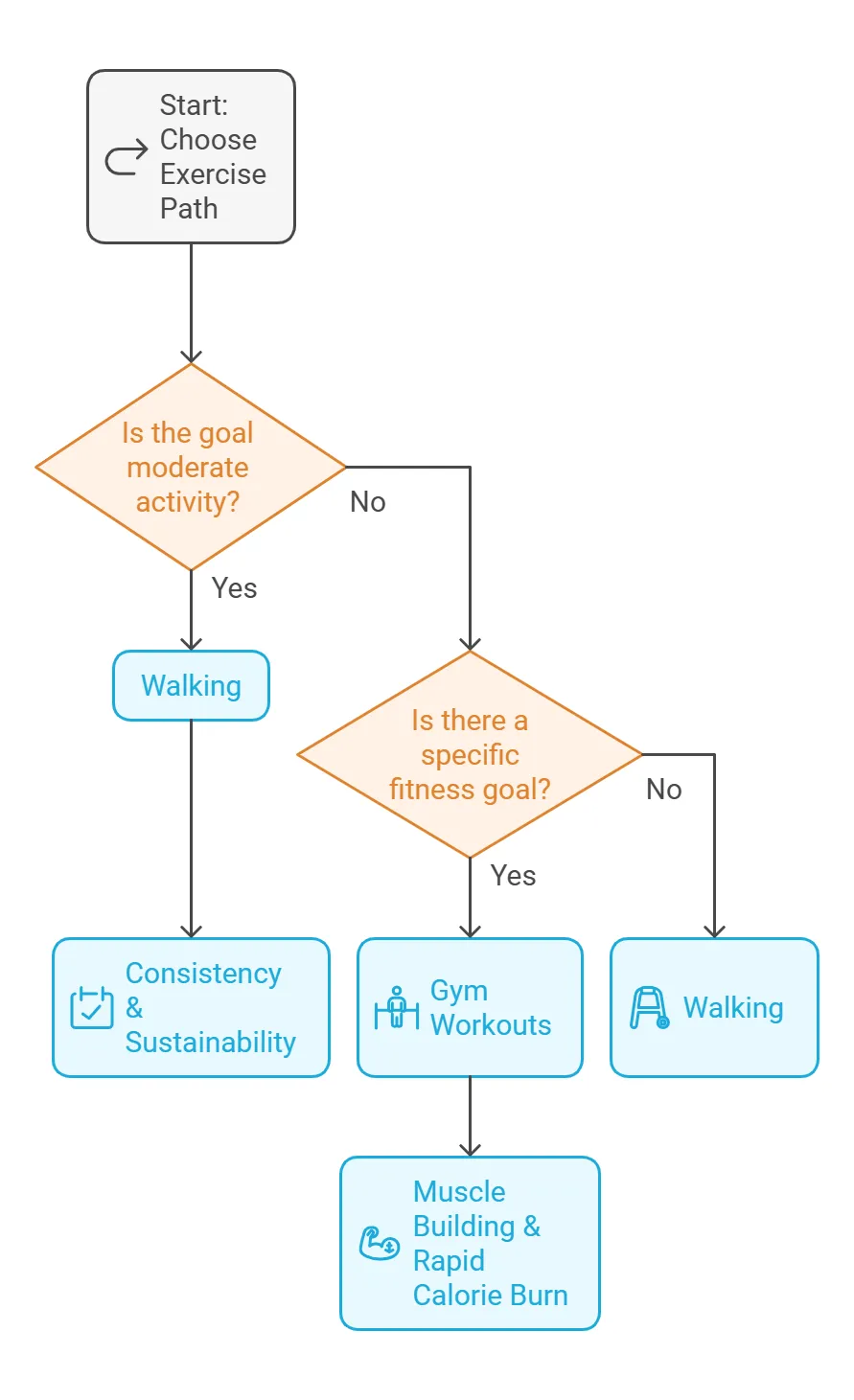Introduction
Walking is one of the simplest and most accessible forms of exercise, yet its benefits are profound. The idea of walking 10,000 steps daily has gained immense popularity over recent years, with many people adopting it as a benchmark for physical fitness. But how many calories does 10000 steps burn? Understanding this can help clarify its role in weight management, overall health, and fitness goals. In this article, we’ll dive into the science of calorie burning, explore why the 10,000-step target matters, and unravel the mechanisms behind walking and energy expenditure.
Why Steps Matter: The Growing Obsession with 10,000 Steps
The 10,000-step goal originated as a marketing concept in the 1960s, introduced by a Japanese pedometer manufacturer. The number was not based on scientific research but rather chosen for its simplicity and appeal. However, it quickly became a global fitness mantra, symbolizing a practical and achievable target for improving health.
In today’s world, where sedentary lifestyles are common, tracking steps is an easy way to motivate movement. Fitness trackers and smartphone apps have made counting steps second nature, encouraging people to incorporate more activity into their daily routines. The appeal lies in its adaptability—whether you're walking to work, pacing in your home, or hiking a trail, every step counts. This universal standard has shifted the conversation about fitness from gym memberships to everyday activity.
The Science Behind Walking and Calorie Burn
Walking might seem straightforward, but the way it contributes to calorie burn is fascinating. As a low-impact exercise, walking engages multiple muscle groups, including the legs, core, and even the arms, depending on your stride and pace. It also stimulates cardiovascular activity, increasing heart rate and oxygen consumption.
Calorie burn occurs when the body converts energy stored in food into fuel. Walking taps into this energy, using it to power movements and maintain vital functions. The rate at which you burn calories while walking depends on factors such as weight, walking speed, terrain, and individual metabolism. Understanding these elements can help tailor walking routines for maximum efficiency.

Understanding Calorie Burning Basics
1. What Are Calories?
Calories are units of energy that fuel the body’s functions. Everything you do—from breathing and digesting to walking and running—requires energy, which comes from the calories in the food and drinks you consume. While calories often carry a negative connotation in discussions about weight loss, they are essential for life. Balancing calorie intake with expenditure is the key to maintaining a healthy weight.
2. How Does the Body Burn Calories?
Calorie burning is a continuous process that happens even when you're at rest. The body uses energy for three main functions:
- Basal Metabolic Rate (BMR): The energy required to maintain basic bodily functions like breathing, circulation, and cell repair.
- Thermic Effect of Food (TEF): The calories burned while digesting and processing food.
- Physical Activity: Any movement, from typing to running, increases calorie burn above the resting level.
Walking falls under the third category and contributes significantly to daily calorie expenditure, especially when done consistently.
3. The Role of Physical Activity in Calorie Expenditure
Physical activity is one of the most controllable ways to influence calorie burn. Unlike BMR or TEF, which are largely determined by genetics and biology, physical activity allows for intentional energy expenditure. Regular walking not only burns calories but also boosts metabolism and enhances cardiovascular health.
The effectiveness of walking depends on factors such as intensity, duration, and individual characteristics. For instance, walking briskly burns more calories than a leisurely stroll, and individuals with higher body weights tend to burn more calories per step. By incorporating walking into your daily routine, you can create a consistent calorie deficit, which is essential for weight loss and maintenance.
In summary, understanding how calories work and how walking influences calorie burn equips you with the knowledge to use this simple activity as a powerful tool for achieving your health goals.
Walking as a Physical Activity
1. Why Walking Is a Universal Exercise
Walking stands out as one of the most inclusive and adaptable forms of physical activity. It requires no special equipment, no expensive gym memberships, and no particular level of fitness to get started and almost everyone can engage in walking at their own pace. Its simplicity, combined with its accessibility, makes walking a universal exercise that fits seamlessly into daily life.
Unlike more intense activities, walking is gentle on the joints and muscles, making it ideal for those recovering from injuries or living with chronic conditions. Whether it's a quick stroll around the block or a brisk power walk, the adaptability of walking ensures that it can be tailored to suit individual needs and fitness levels.
2. How Walking Differs from Other Forms of Exercise
Walking offers unique advantages compared to other forms of physical activity. Unlike high-intensity exercises like running or cycling, walking places minimal stress on the body while still providing cardiovascular and muscular benefits. This makes it a sustainable long-term option for maintaining an active lifestyle.
Another key difference is its low barrier to entry. Many exercises require specialized knowledge, proper form, or training, whereas walking is instinctive and requires little thought. Moreover, walking is inherently versatile—you can incorporate it into various settings, from urban environments to nature trails, without needing dedicated workout spaces.
3. Benefits of Walking Beyond Calorie Burn
While calorie burning is a primary motivator for many walkers, the benefits extend far beyond weight management. Regular walking improves cardiovascular health by lowering blood pressure and reducing the risk of heart disease. It also supports mental well-being, as walking helps reduce stress, anxiety, and symptoms of depression.
Moreover, walking contributes to improved joint health and bone density, particularly when done regularly. It boosts energy levels, enhances mood through the release of endorphins, and improves sleep quality. These holistic benefits make walking not just an exercise but a cornerstone of a balanced, healthy lifestyle.

The 10,000 Steps Goal
1. Where Did the 10,000 Steps Benchmark Come From?
The concept of walking 10,000 steps a day originated in Japan during the 1960s as part of a marketing campaign. A Japanese company launched a pedometer called “manpo-kei,” which translates to “10,000-step meter.” The number was chosen for its catchiness and perceived health benefits, though it wasn’t based on scientific research at the time.
Over the years, this benchmark gained widespread popularity and became synonymous with maintaining a healthy level of daily physical activity. It was later supported by research suggesting that regular walking at this level could reduce the risk of chronic diseases, promote weight management, and enhance overall fitness.
2. Does It Work for Everyone?
While the 10,000-step goal is widely regarded as beneficial, it may not be suitable or realistic for everyone. Factors such as age, fitness level, and physical limitations play a significant role in determining an individual’s ideal step count. For some, particularly beginners or those recovering from injuries, setting a lower step goal and gradually increasing it may be more practical.
Moreover, the benefits of walking are not an all-or-nothing proposition. Even fewer steps, such as 6,000 or 8,000 per day, have been shown to yield significant health advantages. The key is consistency and integrating movement into daily routines rather than fixating on a specific number.
3. Factors That Influence Steps and Health Outcomes
Several factors influence how effective a step-based goal like 10,000 steps can be for health outcomes. These include:
- Pace and Intensity: A brisk pace burns more calories and offers greater cardiovascular benefits than a leisurely walk.
- Duration: The cumulative time spent walking matters as much as the total number of steps.
- Individual Health: Pre-existing conditions, fitness levels, and age can alter how steps translate into health benefits.
Additionally, environmental factors like terrain, weather, and access to walkable spaces significantly affect an individual’s ability to meet step goals. Recognizing and adapting to these influences ensures that the focus remains on achieving sustainable and personalized health improvements through walking.
Calculating Calories Burned by Walking
1. Variables That Affect Calorie Burn
Calorie burn during walking is influenced by several factors, making it a highly variable metric. Understanding these variables is essential for accurate estimations:
- Weight: Body weight plays a significant role in calorie burn. Heavier individuals expend more energy to move their bodies, resulting in a higher calorie burn per step. Conversely, lighter individuals burn fewer calories for the same activity.
- Walking Speed: The faster you walk, the more calories you burn. Brisk walking increases heart rate and oxygen consumption, leading to greater energy expenditure compared to a slow, leisurely pace.
- Terrain: The surface you walk on impacts calorie burn. Uneven or rugged terrain, such as hiking trails or sand, requires more effort and engages additional muscle groups, thereby burning more calories.
- Incline: Walking uphill or on an inclined surface significantly increases calorie burn. The added resistance requires greater effort from your leg and core muscles, making uphill walks more effective than flat-surface walks.
2. The Average Calories Burned Per Step
On average, a person burns approximately 0.04 to 0.06 calories per step. This translates to 40–60 calories burned per 1,000 steps. For 10,000 steps, the estimated calorie burn ranges from 400 to 600 calories. However, these numbers can vary based on the factors mentioned above, such as weight, speed, and terrain.
For example, a 155-pound person walking at a moderate pace of 3.5 mph on a flat surface might burn around 400 calories during 10,000 steps. Meanwhile, a 200-pound person walking at the same pace may burn closer to 600 calories.

3. How to Estimate Calories Burned for 10,000 Steps
To estimate how many calories you burn during a 10,000-step walk:
- Determine Your Weight: Use your current weight in pounds or kilograms.
- Identify Your Walking Pace: Categorize it as slow, moderate, or brisk.
- Account for Terrain and Incline: Consider if you’re walking on flat ground, uneven terrain, or uphill.
- Use a Calorie Calculator or Formula: Online tools or fitness apps can estimate your calorie burn based on these inputs.
Alternatively, the general rule of thumb is to multiply your weight in pounds by 0.3 to 0.5 for a rough estimate of calories burned per mile. Multiply this value by the number of miles walked to get a total calorie burn for 10,000 steps (approximately 5 miles).
Personalizing Your Calorie Burn Estimate
1. Using Wearable Fitness Trackers
Wearable fitness trackers like Fitbit, Garmin, or Apple Watch are excellent tools for estimating calories burned. These devices use sensors to measure your steps, heart rate, and activity levels. They also factor in your personal data, such as weight, height, and age, to provide a more tailored estimate of your calorie burn.
Modern trackers can also differentiate between walking on flat ground and uphill, offering insights into how your effort levels impact calorie expenditure. While not 100% accurate, these devices are reliable for monitoring trends and making adjustments to your fitness routine.
2. Smartphone Apps for Step and Calorie Tracking
Smartphone apps like MyFitnessPal, Pacer, and Google Fit also provide step and calorie tracking features. These apps often sync with wearable devices, allowing you to analyze your walking patterns in greater detail.
Many apps offer additional tools, such as personalized step goals, calorie calculators, and progress tracking. By inputting your weight, height, and activity level, these apps can generate more accurate calorie burn estimates for your walks.
3. Manual Calculations: A Step-by-Step Guide
If you prefer a manual approach, you can calculate calories burned using this simple formula:
- Calculate Calories Per Step: Use an average value of 0.04–0.06 calories per step or determine a more precise value based on your weight and walking pace.
- Multiply by Steps Walked: Multiply the calories per step by the number of steps you’ve walked.
- Adjust for Terrain and Incline: Add 10–20% to the total if you walked uphill or on uneven terrain.
For instance, a 150-pound individual walking 10,000 steps at a moderate pace on flat ground would burn approximately 500 calories (10,000 steps × 0.05 calories per step). Adjust this number based on additional effort or unique factors, such as walking with added weight like a backpack.
By understanding and personalizing these calculations, you can maximize the effectiveness of your walking routine and align it with your health and fitness goals.
Comparing Walking to Other Activities
1. Calorie Burn in Walking vs. Running
Running generally burns more calories per minute than walking due to its higher intensity. For example, a 155-pound person burns about 300 calories running at 6 mph for 30 minutes, compared to roughly 150 calories walking at 3.5 mph for the same duration. The reason lies in the energy demand: running engages more muscles and elevates your heart rate significantly, leading to increased oxygen consumption and calorie expenditure.
However, walking has its advantages. It’s gentler on the joints, making it a safer option for individuals with joint pain, injuries, or conditions like arthritis. Walking can also be sustained for longer periods without exhaustion, allowing you to accumulate calorie burn over time.

2. Walking vs. Cycling: Which Burns More?
Cycling and walking are both effective cardio exercises, but their calorie burn depends on factors like intensity and duration. Cycling at a moderate pace (12–14 mph) burns approximately 298 calories in 30 minutes for a 155-pound person, while walking at a brisk pace burns around 150 calories in the same timeframe.
Cycling tends to burn more calories due to its ability to incorporate resistance (e.g., uphill cycling or using a higher gear). However, walking excels in accessibility and versatility. It requires no equipment and can be seamlessly integrated into daily routines, whereas cycling may require specific terrain, a bike, and safety gear.

3. Is Walking Better Than Gym Workouts?
Walking and gym workouts serve different purposes. Gym exercises, such as weightlifting or high-intensity interval training (HIIT), are designed for building strength, improving muscular endurance, and achieving rapid calorie burn in a controlled environment. Walking, on the other hand, emphasizes consistency, sustainability, and accessibility.
For individuals seeking moderate activity or looking to complement a sedentary lifestyle, walking is an excellent starting point. It’s a natural form of exercise that can improve overall health without requiring specialized knowledge or equipment. For those with specific fitness goals like muscle building or significant weight loss, gym workouts may offer faster results. Ultimately, the best choice depends on your personal goals, preferences, and physical condition.

The Health Benefits of 10,000 Steps
1. Improved Cardiovascular Health
Walking 10,000 steps daily significantly improves heart health. It strengthens the heart muscle, lowers blood pressure, and enhances circulation, reducing the risk of cardiovascular diseases such as heart attacks and strokes. Regular walking also helps regulate cholesterol levels by increasing HDL (good cholesterol) and lowering LDL (bad cholesterol).
Moreover, the rhythmic movement of walking stimulates blood flow and oxygen delivery to tissues, improving vascular health over time. This makes walking an effective, low-impact way to support long-term cardiovascular wellness.
2. Better Mental Health and Reduced Stress
Walking isn’t just good for the body—it’s also a boon for the mind. Studies have shown that regular walking can reduce symptoms of anxiety and depression. The rhythmic motion and release of endorphins during walking promote feelings of relaxation and happiness.
Walking outdoors amplifies these benefits by exposing you to natural surroundings, which can reduce stress and improve focus. It also provides an opportunity for mindfulness or meditation, as the act of walking itself encourages a slower, more reflective pace of mind.
3. Weight Management and Beyond
One of the most well-known benefits of walking 10,000 steps is its role in weight management. Walking burns calories, increases metabolism, and helps maintain a healthy weight when combined with a balanced diet. However, its benefits extend far beyond the scale.
Walking improves joint mobility, builds muscular endurance, and enhances overall stamina. It supports better digestion, strengthens bones, and even contributes to a stronger immune system by promoting better circulation of white blood cells. These holistic benefits make walking not only a tool for fitness but a foundation for overall well-being.
Incorporating 10,000 steps into your daily routine is more than a fitness challenge—it’s a lifestyle choice that can positively transform both your physical and mental health.
Addressing Common Misconceptions
1. “Walking Alone Is Enough for Weight Loss”
Walking is a valuable tool for weight management, but it’s not a standalone solution for significant weight loss. Weight loss occurs when there’s a consistent calorie deficit—burning more calories than consumed. While walking burns calories, its impact is limited unless paired with a balanced diet and other forms of exercise.
For example, brisk walking may burn 300–500 calories per hour, but consuming high-calorie meals can easily offset these gains. Additionally, incorporating strength training or high-intensity workouts alongside walking can help build muscle and boost metabolism, making weight loss efforts more effective.
2. “10,000 Steps Guarantee Results for Everyone”
The 10,000-step benchmark is a helpful guideline but not a one-size-fits-all solution. People have varying fitness levels, health conditions, and lifestyle factors that influence their ability to achieve this goal and derive benefits.
For some, fewer steps—like 6,000 or 8,000 daily—may still significantly improve health. Others may require more intense activity or additional steps to see noticeable results. The key is to adapt the goal to your own needs and focus on consistent movement rather than fixating on the number alone.
3. “Calorie Burn Is the Only Measure of Fitness”
Fitness is a multifaceted concept that extends beyond calorie burn. While walking can help manage weight and increase calorie expenditure, its benefits also include improved cardiovascular health, stronger muscles and bones, reduced stress, and better mental clarity.
Judging fitness solely by calories burned overlooks the broader advantages of walking, such as enhanced endurance, better sleep, and a stronger immune system. True fitness involves a holistic approach, including a mix of exercise types, healthy eating, and mental well-being practices.
Strategies to Reach 10,000 Steps
1. Simple Tips to Increase Your Step Count
- Take Short Walks Frequently: Break your day into manageable walking sessions. A 10-minute walk after meals can add up quickly.
- Use the Stairs: Opt for stairs instead of elevators whenever possible to increase your step count and burn more calories.
- Park Farther Away: When driving, park at the far end of parking lots to add extra steps to your routine.
- Set Alarms or Reminders: Schedule regular walking breaks during your workday to combat long periods of sitting.
2. Turning Everyday Activities into Walking Opportunities
- Run Errands on Foot: Walk to nearby stores, post offices, or coffee shops instead of driving.
- Pace While on the Phone: Turn phone calls into opportunities to walk around your house or office.
- Walk During Screen Time: Use a treadmill or walk in place while watching TV or attending virtual meetings.
By integrating walking into daily habits, you can naturally increase your step count without feeling like you’re exercising.
3. Making Step Goals Fun and Sustainable
- Track Your Progress: Use a fitness tracker or app to monitor your steps and celebrate milestones.
- Challenge Friends or Family: Turn walking into a friendly competition to stay motivated and accountable.
- Explore New Routes: Keep your walks exciting by discovering new trails, parks, or neighborhoods.
- Incorporate Music or Podcasts: Enhance your walking experience with a motivating playlist or engaging podcast.
The goal is to make walking an enjoyable and sustainable part of your lifestyle. When walking feels less like a chore and more like an adventure, hitting 10,000 steps becomes an achievable and rewarding daily habit.
Summary and Key Takeaways
1. The Realistic Benefits of Walking 10,000 Steps
Walking 10,000 steps daily is a practical, accessible way to improve overall health. It supports cardiovascular fitness, helps maintain a healthy weight, reduces stress, and enhances mental well-being. While the calorie burn from walking may vary, its long-term benefits extend beyond physical fitness, contributing to a healthier lifestyle and better quality of life.
However, it’s important to set realistic expectations. Walking alone may not lead to dramatic weight loss or achieve all fitness goals, but it lays a solid foundation for a more active and balanced life.
2. The Importance of Consistency and Balance
Consistency is the key to unlocking the benefits of a 10,000-step routine. Incorporating walking into your daily habits ensures that the activity becomes sustainable rather than a fleeting effort. Balance is equally essential—pairing walking with other forms of exercise and a nutritious diet amplifies its effects and creates a more comprehensive approach to fitness and health.
Rather than focusing solely on numbers, prioritize regular movement and listen to your body’s needs. Whether your step count is 7,000 or 15,000, the most important step is the one you take today and every day.
FAQs
How accurate are fitness trackers in measuring calories burned?
Fitness trackers provide reasonably accurate estimates of steps and calorie burn, but they’re not perfect. Most devices use algorithms based on weight, height, age, and heart rate to calculate calories burned. While these numbers are helpful for tracking trends and progress, they may not account for variables like terrain or individual metabolic differences.
Can walking 10,000 steps a day replace a workout routine?
Walking 10,000 steps is a fantastic baseline for daily activity, but it may not replace the benefits of a well-rounded workout routine. For muscle building, improved flexibility, and higher calorie burn, incorporating strength training, stretching, or high-intensity exercises can complement your walking routine.
What should I eat to complement a 10,000-step routine?
A balanced diet rich in whole foods supports a 10,000-step routine. Focus on lean proteins, whole grains, fruits, and vegetables to fuel your body. Avoid excessive calorie consumption, which could negate the benefits of your walking efforts. Staying hydrated is equally important to maintain energy levels during physical activity.
Is 10,000 steps achievable for everyone?
While 10,000 steps is a good goal for many, it might not be realistic for everyone. Beginners, individuals with mobility issues, or those recovering from injuries can start with a smaller step goal and gradually increase their activity. Even 6,000–8,000 steps daily can offer substantial health benefits, proving that every step counts.
How can I improve my walking efficiency to burn more calories?
- Increase Your Pace: Brisk walking burns more calories than a leisurely stroll.
- Add Inclines: Walking uphill or on uneven terrain requires more effort and burns additional calories.
- Engage Your Arms: Swinging your arms or carrying light weights can intensify the workout.
- Focus on Posture: Good posture helps engage core muscles, improving calorie burn and reducing the risk of injury.
By incorporating these strategies, you can make your walks more effective and maximize their health benefits.








